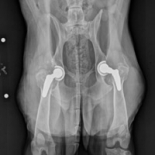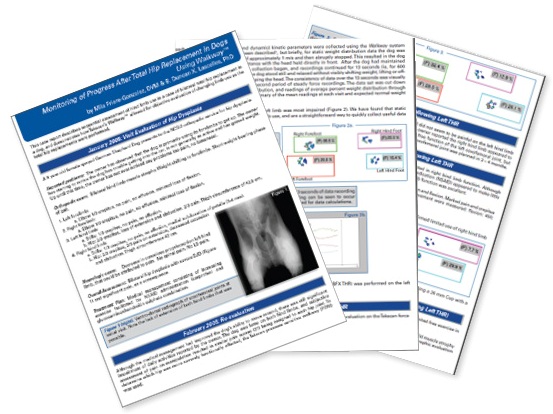By Mila Friere-Gonzalez, DVM & B. Duncan X. Lascelles, PhD
This case summary describes the background of a case of bilateral total hip replacement in a dog, and demonstrates how the Walkway™ animal gait analysis system allowed for objective evaluation of changing limb use as the total hip replacements were performed.
Background: A 9 year old female spayed German Shepherd Dog presents to the NCSU orthopedic service for hip dysplasia.
Reported problems: The owner has observed that the dog is primarily using its forelimbs to get up. The owner has starting to notice the dog has trouble getting into the car, is not generally as active and has gained weight. Up until this time, the owner has not ever noticed any problems (no pain, no lameness).
Overall Assessment: Bilateral hip dysplasia with severe DJD (Figure 1) and significant pain, as a consequence.
Download the case study here:

